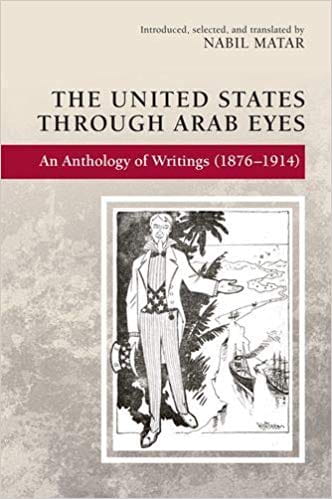
The United States through Arab Eyes: An Anthology of Writings (1876–1914)
Robert W. Lebling
Nabil Matar
2018, Edinburgh UP 978-1-47443-436-2, £19.99 pb.
This book suggests that Americans (and perhaps others) might want to take a closer look at their migratory roots. Migration is not easy: It involves uprooting families, searching for new homes and jobs, and adjusting to a new way of life. This collection is the first English translation of Arabic accounts of travel and emigration to the US, from 1876 to the beginning of World War I, offering a fresh perspective on what America was like then for Arab visitors and immigrants. The collection focuses on travels and migration of people from Egypt and from Ottoman Syria (e.g., Syria, Lebanon and Palestine). Writers include Egypt’s Idwar Ilyas (1876) and Prince Muhammad ‘Ali Pasha (1912), Lebanon’s Jibra’il Ilyas Ward (1898) and Palestine’s Khalil al-Sakakini (1907). We learn about the successes and disappointments of Arab immigrants as they search for the “American dream” and encounter sometimes harsh reality. We also learn about these Arab encounters with, and impressions of, other ethnic groups in the American mix, including Chinese and African Americans, both of whom have suffered their own hard times in America. This collection is an eye-opener.
You may also be interested in...

In War and Peace, Book Explores How Rome and Persia Remained Frenemies
Book Review: In his latest scholarly work, Roman historian Adrian Goldsworthy reduces Persian and Roman longevity to simply an ever-evolving coexistence..png?cx=0.44&cy=0.65&cw=382&ch=487.6595744680851)
Zeina Abirached’s Art Uncovers Urgency of Wisdom in Gibran’s The Prophet
Kahlil Gibran’s 1923 classic is given new life, as Abirached’s graphic novel blends Lebanese artistry with the late author’s timeless wisdom.